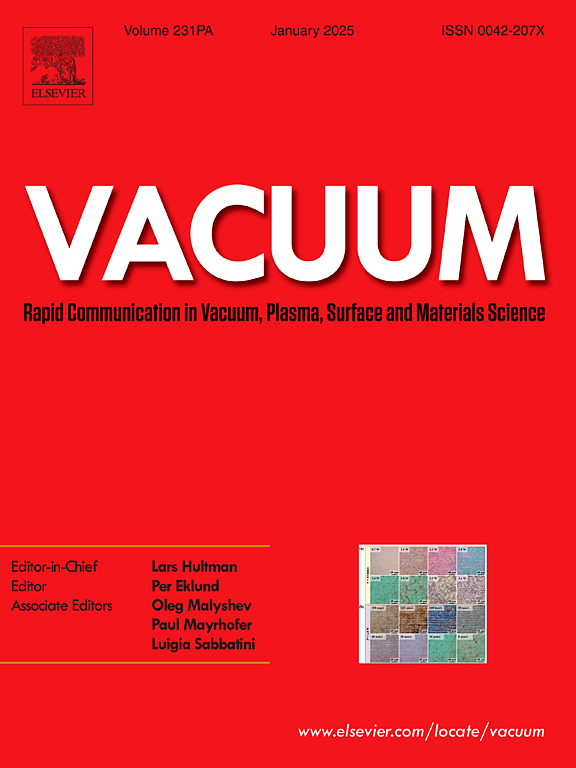Evaluation of TiO2/ZnO/SnO2 multilayer thin films on Si(100) as triboelectric friction layer
IF 3.8
2区 材料科学
Q2 MATERIALS SCIENCE, MULTIDISCIPLINARY
引用次数: 0
Abstract
This study presents a novel multilayer-semiconductor triboelectric nanogenerator (MLSC-TENG) that enhances charge transfer and initial charge density to overcome the limitations of conventional TENGs by multilayer thin films composed of TiO2, ZnO, and SnO2. The device operates through contact electrification and electrostatic induction, featuring two distinct electrodes. The active negative layer is deposited on Si substrates with an Ag seed layer using magnetron sputtering, employing a PET/ITO counter-electrode. The system attains a maximum power density of 400 mW/m2 with a 100 MΩ load, a short-circuit current of 20 μA at 10 Hz, and an open-circuit voltage of ±55 V. Additionally, it powers 156 LEDs and exhibits an energy storage capacity of 16.9 μJ at 52 μF, highlighting its applicability for wearable electronics. This scalable and cost-effective approach highlights the significant role of semiconductor (SC) band structures in enhancing TENG performance and presents a viable pathway for sustainable energy harvesting. The demonstrated strategy has the potential to meaningfully influence the application of TENGs in energy harvesting systems, providing a cost-effective solution for powering wearable electronics. The study facilitates progress in sustainable energy solutions for future wearable technologies by tackling critical issues in energy conversion efficiency.
Si(100)上TiO2/ZnO/SnO2多层薄膜作为摩擦电摩擦层的评价
本研究提出了一种新型多层半导体摩擦电纳米发电机(MLSC-TENG),通过由TiO2、ZnO和SnO2组成的多层薄膜,提高了电荷转移和初始电荷密度,克服了传统纳米发电机的局限性。该装置通过接触通电和静电感应来工作,具有两个不同的电极。利用磁控溅射,采用PET/ITO反电极,将活性负极层沉积在带有Ag种子层的Si衬底上。系统在负载为100 MΩ、短路电流为20 μA (10hz)、开路电压为±55 V时,最大功率密度可达400 mW/m2。此外,它为156个led供电,在52 μF时的能量存储容量为16.9 μJ,突出了其可穿戴电子产品的适用性。这种可扩展且具有成本效益的方法突出了半导体(SC)带结构在提高TENG性能方面的重要作用,并为可持续能量收集提供了可行的途径。所展示的策略有可能对teng在能量收集系统中的应用产生有意义的影响,为可穿戴电子设备供电提供一种具有成本效益的解决方案。该研究通过解决能源转换效率的关键问题,促进了未来可穿戴技术可持续能源解决方案的进展。
本文章由计算机程序翻译,如有差异,请以英文原文为准。
求助全文
约1分钟内获得全文
求助全文
来源期刊

Vacuum
工程技术-材料科学:综合
CiteScore
6.80
自引率
17.50%
发文量
0
审稿时长
34 days
期刊介绍:
Vacuum is an international rapid publications journal with a focus on short communication. All papers are peer-reviewed, with the review process for short communication geared towards very fast turnaround times. The journal also published full research papers, thematic issues and selected papers from leading conferences.
A report in Vacuum should represent a major advance in an area that involves a controlled environment at pressures of one atmosphere or below.
The scope of the journal includes:
1. Vacuum; original developments in vacuum pumping and instrumentation, vacuum measurement, vacuum gas dynamics, gas-surface interactions, surface treatment for UHV applications and low outgassing, vacuum melting, sintering, and vacuum metrology. Technology and solutions for large-scale facilities (e.g., particle accelerators and fusion devices). New instrumentation ( e.g., detectors and electron microscopes).
2. Plasma science; advances in PVD, CVD, plasma-assisted CVD, ion sources, deposition processes and analysis.
3. Surface science; surface engineering, surface chemistry, surface analysis, crystal growth, ion-surface interactions and etching, nanometer-scale processing, surface modification.
4. Materials science; novel functional or structural materials. Metals, ceramics, and polymers. Experiments, simulations, and modelling for understanding structure-property relationships. Thin films and coatings. Nanostructures and ion implantation.
 求助内容:
求助内容: 应助结果提醒方式:
应助结果提醒方式:


